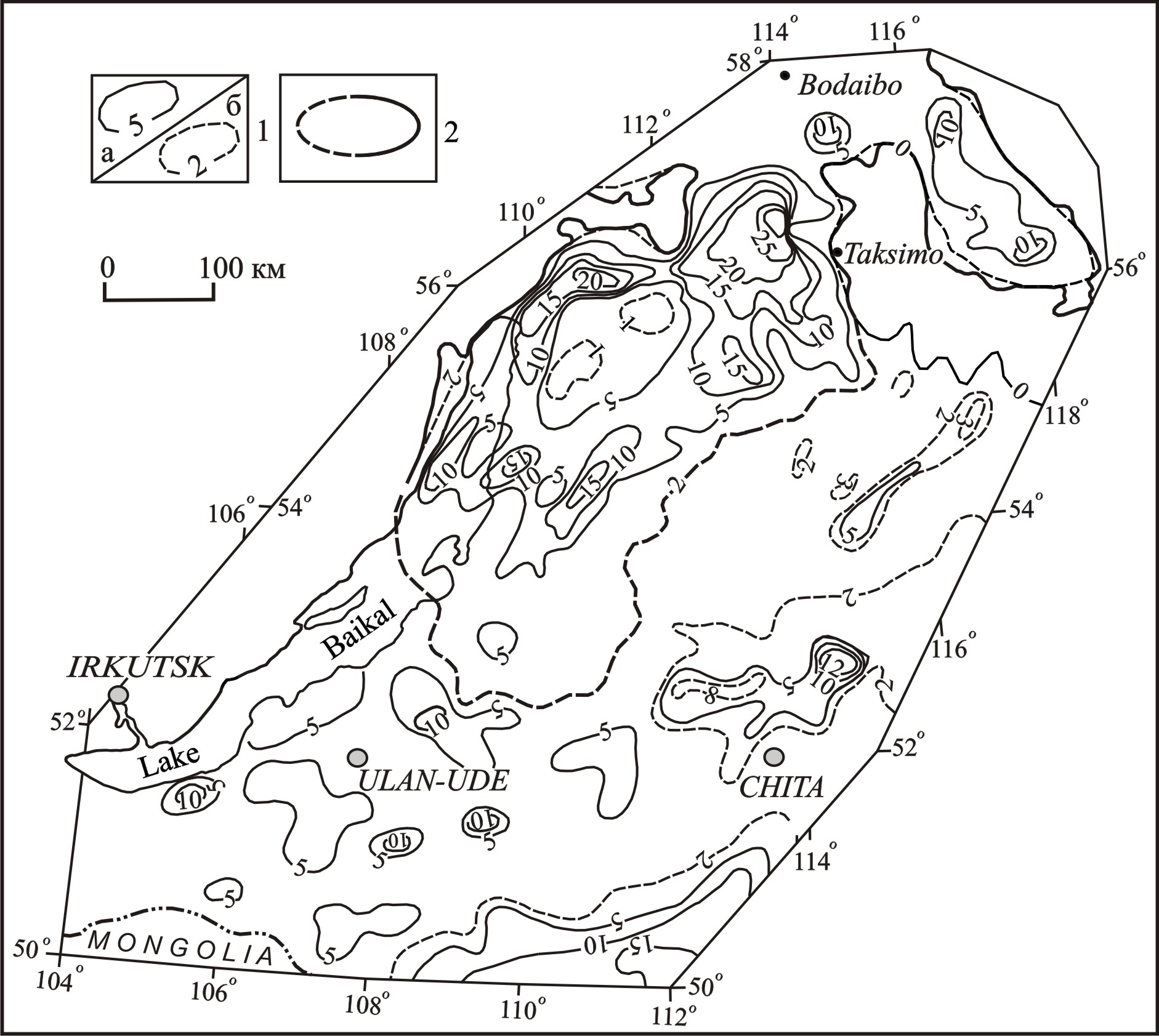|
ANGARA-VITIM BATHOLITH: SHAPE AND STRUCTURAL FEATURES BY GRAVIMETRIC DATA Turutanov E.Kh.*, Grebenschikova V.I.**, Noskov D.À.** *Institute of the Earth’s Ñrust SB RAS, Irkutsk, Russia, tur@crust.irk.ru **Institute of Geochemistry SB RAS, Irkutsk, Russia, vgreb@igc.irk.ru
The problem of granitoid magmatism, as the indicator of subduction, collision and intraplate settings, is assigned to numerous unsolved issues of deep structure and geodynamics of the eastern Pre-Baikal region. The Angara-Vitim field of granitoids represents a favorable study area for solving similar problems, because geological evidence suggests there are both collision- and subduction-type granitoids. Geophysical data might provide appropriate evidence on the deep morphology of geological units, and therefore, the volume of granitoid magmatism related to collision, subduction and possibly, superplume activity. In the eastern Pre-Baikal area, the paleozoic granitoids, looking the irregularly-shaped oval elongated in the north-eastern direction, occupy the area from 120.000 to 150.000 sq. km. The intrusions of Paleozoic granitoids share similar compositions, close values of density deficit relative to deeply metamorphosed formations, and they occur within the zone of lowered values of gravitational field (Litvinovsky et al., 1993). This zone is a unified negative anomaly of the first order, representing a huge linearly elongated intrusive body due to the geological and petrophysical data. The isostatic anomalies were attracted for quantitative calculations. The influence of compensated masses can be essentially diminished through a transition from isostatic to decompensated anomalies (Zorin et al, 1985). It is reasonable to use decompensated anomalies as the local isostatic compensation is eliminated, for it distorts gravitational effects from geological structures thus decreasing anomaly intensity. Considering geological bodies, with the width not exceeding 20 km, such distortions can be ignored. However, if the width of the bodies, being the objects of interpretation, is over 50-100 km, the intensity of anomalies may be decreased significantly, that will result in the wrong evaluation of body volumes, and, consequently, to the incorrect vision of granitization scale. Such bodies are the plutons making up the Angara-Vitim field of granitoids. The quantitative interpretation was performed via inversion of decompensated anomalies with approximation of geological bodies bounded along the strike by 3-D prisms with vertical sections shaped as polygons (Webring, 1985). In general, the geometry of the Angara-Vitim field of granitoids is characterized by the following features (Fig. 1): in its central part majority of large and some smaller granitoid massifs merge at depth into one intrusive body. The area of projection of this body onto the Earth’s surface is over 100 000 sq. km. The central segment of the batholith extends for about 600 km, with the width varying from 30 to 250 km. The average vertical thickness of batholith is evaluated to be 5-7 km. In thickened sites the vertical dimensions of granitoids reach 15-30 km. In cross-sections, this gigantic pluton looks as a massive body with thickness blows and lateral apophyses. The other part of batholith, uniting its southern and eastern sides, is a thin slab with the average thickness of about 2-3 km, and it reaches 5-10 km in some places.
At the first approximation, the volumetric model of the Angara-Vitim batholith is comparable to a huge slab with an intricately constructed base and subhorizontal roof. It is hard to attribute it to any particular shape of an intrusive body, although considering the interpreted sections, it is close to lopolite-like one. The work was supported by the RFBR project ¹ 06-05-65054.
References Litvinovsky B.À., Zanvilevich À.N., Alakshin À.Ì., Podladchikov Yu.Yu. Angara – Vitim batholith – the largest granite pluton. Novosibirsk: Publ.H. UIGGM SB RAS, 1993, 141p. Zorin Yu.À., Pismenny B.M., Novosjolova Ì.R., Turutanov Å.Kh. Decompensated gravity anomalies // Geology & Geophysics. 1985. ¹ 8. P.104-108. Webring M. Semi-automatic Marquardt inversion of gravity and magnetic profiles // U.S. Geological Survey Open-File Report OF 85-122- Denver: USGS, 1985. 48p.
|
